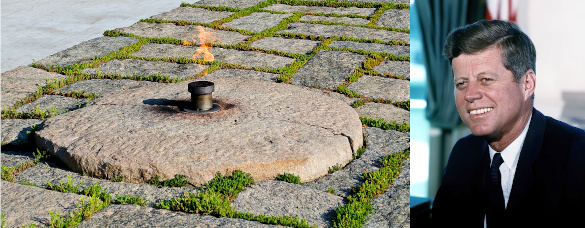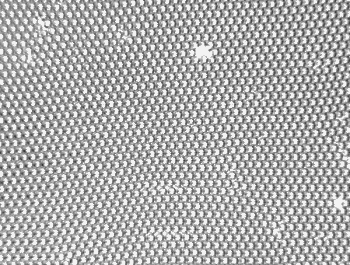Eternal Bubbles
October 24, 2022
My
high school mathematics courses were a good preparation for the advanced mathematics I needed in my
later education. Fortunately, my high school
science instruction was based on the
PSSC,
BSSC, and
CHEMStudy curricula designed as the
Space Race response to generate more
scientists in the
United States. Intermixed with these were the
compulsory English language and
English literature courses that likely help with my
writing skills. Nothing was too
memorable in those courses, except a particular
sonnet.
That sonnet was
Ozymandias by
Percy Bysshe Shelley (1792–1822). It's a
reflection on the
impermanence of the
works of man, in this case, those of
Ramesses II (c. 1303-1213 BC), also known as Ramesses the Great and by his
Greek name, Ozymandias. An unnamed
traveler happens upon a
ruined sculpture bearing the
inscription, "
King of Kings am I, Osymandias. If anyone would know how
great I am and where I lie, let him surpass one of my works." This is written by Shelley, as follows.
Two vast and trunkless legs of stone
Stand in the desart. Near them, on the sand,
Half sunk, a shattered visage lies, whose frown,
And wrinkled lip, and sneer of cold command,
Tell that its sculptor well those passions read.
Although we can never break the
second law of thermodynamics (the
entropy law), we still strive to fashion
eternal things, sometimes aided by
materials science. As if responding to the
lesson of Ozymandias, there are sculptures made from
COR-TEN steel, designed to
rust to a stable
patina and resist subsequent
corrosion. However, despite the
claim that "
diamonds are forever," they will
burn like any other
form of carbon.

There are many eternal flames in the world, as attested by the eternal flames Wikipedia page. A prominent United States example is the John F. Kennedy Eternal Flame in Arlington National Cemetery, created to commemorate the life of John F. Kennedy (1917-1963), the 35th President of the United States. This gas flame was temporarily extinguished in August, 1967, just a few years after its initial lighting.
Right image, the eternal flame at the John F. Kennedy grave site in Arlington National Cemetery, photographed by Tim Evanson on May 30, 2013.
Left image, John F. Kennedy, public domain photograph by White House photographer, Cecil Stoughton, National Archives Identifier (NAID) 194255. Both images via Wikimedia Commons. (Click for larger image.)
One notably non-eternal object is the
soap bubble, an inexpensive way to
entertain children in the
summer months. Soap bubbles became useful in
physics in the late
1940s when
Nobel laureate,
William Lawrence Bragg (1890-1971), and
John Nye (1923-2019) of the
Cavendish Laboratory of
Cambridge University produced arrays of soap bubbles
floating on
water, called
bubble rafts, to
simulate atoms in
crystals.[1] I wrote about bubble rafts in two previous articles (
Kirchhoff–Plateau Problem, June 15, 2017 and
Soap Films, April 28, 2011.
Bragg and Nye created bubble rafts of 100,000 or more
sub-millimeter bubbles. These simulated atoms allowed study of such
crystal phenomenon as
grain boundaries and
dislocations.[1] Their bubble
recipe was an
aqueous solution of
glycerine,
oleic acid, and
triethanolamine in water.[1] triethanolamine is not a common
household item, although
olive oil might substitute for the oleic acid. A recipe for a playtime bubble solution is 2/3
cup of
dishwashing liquid and 2/3
tablespoon of glycerine (also known as glycerol) in a
gallon of water. The purpose of the glycerine is to slow the
evaporation of water from the bubble, thereby increasing its
lifetime.

A bubble raft with bubbles that are about 1.5 millimeter in diameter from a laboratory class at MIT.
Bubble rafts are often used in physics teaching laboratories. An edge dislocation (an inserted row of bubbles) can be seen in the lower right hand quadrant.
(Wikimedia Commons image by Vlad Tarasov, modified.)
A soap bubble may persist for a
minute. Why they are
stable at all relates to the
surface tension of water. The uniform tension at all
points on the
surface is responsible for pulling a bubble into its
spherical shape against the internal
gas pressure. The
soap molecules, being
hydrophilic on one end and
hydrophobic on the other, form
protective layers on the inside and outside of the water layer. On the outside, this reduces the evaporation of water, reduces the eventual removal of surface tension, and
bursting of the bubble.

A large soap bubble reflecting a streetscape in Ljubljana, Slovenia.
Soap bubbles containing glycerine have a longer lifetime, since the glycerine molecules have a low vapor pressure, they are hydrogen-bonded to the water molecules, and they hinder the water evaporation.
(Wikimedia Commons image by P.L. Bechly.)
So, preventing water evaporation is the
trick to making a bubble with a long lifetime. A team of
physicists from the
Université Polytechnique Hauts-de-France (Lille, France) have created
Everlasting bubbles by
encapsulating them in
plastic microparticles.[2-4] One such water-glycerine bubble that they created had a 465 day lifetime.[3-4] This is a lifetime that's more than 200,000 times as long as that of a typical soap bubble.[3]
These
gas marbles are created in a
liquid solution that allows the microparticles to pack together on the bubble surface.[3] This plastic
shell gives the bubbles enough
strength that they can be held in a
hand and
rolled along a surface. Gas marbles created from water alone lasted up to an hour, but water-glycerol marbles had a much longer lifetime, with one lasting 465 days.[3] The team
speculates that the glycerine
absorbs water from the air, while the plastic microparticle shell prevents
drainage of water from the shell.[3]

An example of a gas marble.
Principal author of this research, Michaël Baudoin, a professor at the Université Polytechnique Hauts-de-France (Lille, France), presented the French team's research at an online session of a Physical Review journal club hosted by the American Physical Society (APS) and archived at the APS YouTube Channel.[5].
(Still image from a YouTube Video.[5])
As
Michaël Baudoin, a
professor at the
Université Polytechnique Hauts-de-France (Lille, France) and principal
author of this
research, explained, another research group was the first to create gas marbles, but these were much larger and hydrophobic instead of hydrophilic.[4-5] These gas marbles had a shorter lifetime, and the issue of
longevity was not addressed.[4-5] Baudoin's team created their gas marbles by
floating 80
micrometer plastic microparticles on a liquid surface and bubbling air from below.[4-5]
When the liquid was just water, the microparticle coated bubbles burst in about half an hour, and
experiments in which the
relative humidity was changed indicated that water evaporation was responsible.[4-5] Another mechanism for water loss, drainage to the bottom of the bubbles, was prevented by
capillary bridging of the water between the microparticle beads.[4-5] The next step was addition of glycerine, which both retarded evaporation and pulled water from the air to maintain the surface water.[4-5] The French team also developed a
model of the bubble stability.[4-5]
References:
- Lawrence Bragg and J. F. Nye, "A Dynamical Model of a Crystal Structure," Proceedings of the Royal Society of London. Series A, vol. 190, no. 1023. (September 9, 1947), pp. 474-481, doi:10.1098/rspa.1947.0089.
- Aymeric Roux, Alexis Duchesne, and Michael Baudoin, "Everlasting bubbles and liquid films resisting drainage, evaporation, and nuclei-induced bursting," Phys. Rev. Fluids, vol. 7, no. 1 (January 1, 2022), Article no. L011601, DOI:https://doi.org/10.1103/PhysRevFluids.7.L011601.
- Katherine Wright, "Record Lifetime for a Bubble," Physics, vol. 15, no. s7 (January 18, 2022).
- Abigail Eisenstadt, "Scientists Present a Recipe for Eternal Bubbles," APS News, vol. 31, no. 4 (April, 2022).
- Physical Review Journal Club: Michael Baudoin on Everlasting bubbles, YouTube video by APS Physics, February 22, 2022.
Linked Keywords: High school; mathematics; course (education); ndergraduate education; science; Physical Science Study Committee; PSSC; BSCS Science Learning; BSSC; CHEMStudy; curriculum; curricula; Space Race; scientist; United States; compulsory; English language; English literature; writing; skill; memory; memorable; sonnet; Ozymandias; Percy Bysshe Shelley (1792–1822); consideration; reflection; impermanence; culture; works of man; Ramesses II (c. 1303-1213 BC); Greek language; travel; traveler; ruins; ruined; sculpture; epigraph; inscription; monarch; king; fame; great; second law of thermodynamics; entropy; materials science; object lesson; weathering steel; COR-TEN steel; rust; patina; corrosion; claim (philosophy); diamonds are forever; combustion; burn; allotropes of carbon; form of carbon; John F. Kennedy Eternal Flame; eternal flame; world; eternal flames Wikipedia page; Arlington National Cemetery; memorialization; commemorate; John F. Kennedy (1917-1963); President of the United States; gas flame; extinguish; Tim Evanson; public domain; White House; National Archives and Records Administration; Wikimedia Commons; soap bubble; entertainment; entertain; children; summer months; physics; 1940s; Nobel laureate; William Lawrence Bragg (1890-1971); John Nye (1923-2019); Cavendish Laboratory; University of Cambridge; Cambridge University; buoyancy; floating; water; bubble raft; simulation; simulate; atom; crystal; Kirchhoff–Plateau Problem; sub-millimeter; phenomenon; grain boundary; dislocation; recipe; aqueous solution; glycerol; glycerine; oleic acid; triethanolamine; household; olive oil; cup<; dishwashing liquid; tablespoon; gallon; evaporation; lifetime; millimeter; diameter; laboratory; classroom; class; Massachusetts Institute of Technology; MIT; physics; education; teaching; edge dislocation; quadrant (plane geometry); Vlad Tarasov; minute; chemical stability; stable; surface tension; point (geometry); surface; sphere; spherical shape; gas; pressure; molecule; hydrophile; hydrophilic; hydrophobe; hydrophobic; protection; protective; coating; layer; burst; bursting; reflection (physics); reflecting; landscape; streetscape; Ljubljana; Slovenia; vapor pressure; hydrogen bond; hydrogen-bonded; properties of water; Wikimedia Commons; P.L. Bechly; methodology; trick; Université Polytechnique Hauts-de-France (Lille, France); encapsulation; encapsulating; plastic; microparticle; liquid; solution (chemistry); exoskeleton; shell; strength of materials; hand; rolling; rolled; speculative reason; speculate; absorption (chemistry); absorb; drainage; author; research; Michaël Baudoin; professor; France; French; Internet; online session; Physical Review; journal club; American Physical Society; archive; archived; YouTube; YouTube Video; longevity; buoyancy; floating; micrometer; experiment; relative humidity; capillary action; capillary bridging; mathematical model.